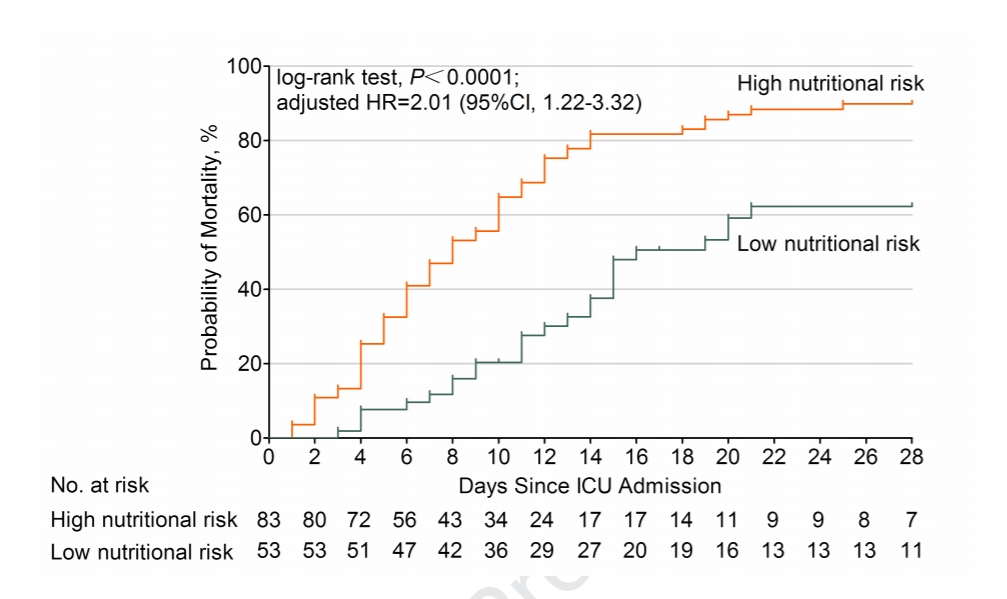The modified NUTRIC score can be used for nutritional risk assessment as well as prognosis prediction in critically ill COVID-19 patients
Ping Zhang, Clinical Nutrition June 04, 2020
Background and Aims
In the newly emerged Coronavirus Disease 2019 (COVID-19) disaster, little is known about the nutritional risks for critically ill patients. It is also unknown whether the modified Nutrition Risk in the Critically ill (mNUTRIC) score is applicable for nutritional risk assessment in intensive care unit (ICU) COVID-19 patients. We set out to investigate the applicability of the mNUTRIC score for assessing nutritional risks and predicting outcomes for these critically ill COVID-19 patients.
Methods
This retrospective observational study was conducted in three ICUs which had been specially established and equipped for COVID-19 in Wuhan, China. The study population was critically ill COVID-19 patients who had been admitted to these ICUs between January 28 and February 21, 2020. Exclusion criteria were as follows: 1) patients of <18 years; 2) patients who were pregnant; 3) length of ICU stay of <24 hours; 4) insufficient medical information available. Patients’ characteristics and clinical information were obtained from electronic medical and nursing records. The nutritional risk for each patient was assessed at their ICU admission using the mNUTRIC score. A score of ≥5 indicated high nutritional risk. Mortality was calculated according to patients’ outcomes following 28 days of hospitalization in ICU.
Results
A total of 136 critically ill COVID-19 patients with a median age of 69 years (IQR: 57-77), 86 (63%) males and 50 (37%) females, were included in the study. Based on the mNUTRIC score at ICU admission, a high nutritional risk (≥5 points) was observed in 61% of the critically ill COVID-19 patients, while a low nutritional risk (<5 points) was observed in 39%.
The mortality of ICU 28-day was significantly higher in the high nutritional risk group than in the low nutritional risk group (87% vs 49%, P <0.001). Patients in the high nutritional risk group exhibited significantly higher incidences of acute respiratory distress syndrome, acute myocardial injury, secondary infection, shock and use of vasopressors. Additionally, use of a multivariate Cox analysis showed that patients with high nutritional risk had a higher probability of death at ICU 28-day than those with low nutritional risk (adjusted HR =2.01, 95% CI: 1.22-3.32, P =0.006).
Conclusions
A large proportion of critically ill COVID-19 patients had a high nutritional risk, as revealed by their mNUTRIC score. Patients with high nutritional risk at ICU admission exhibited significantly higher mortality of ICU 28-day, as well as twice the probability of death at ICU 28-day than those with low nutritional risk. Therefore, the mNUTRIC score may be an appropriate tool for nutritional risk assessment and prognosis prediction for critically ill COVID-19 patients.














